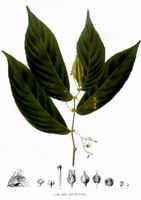
Brown & Bennett, Pl. Jav. rar. (1838-40), t. 25, as Loxonia acuminata
Full name and orig. publication: Loxonia Jack, Trans. Linn. Soc. 14: 40 (1823, "1825").
Etymology: From the Greek λοξος, loxos = oblique, alluding to the strongly asymmetrical leaves.
Synonym: Loxophyllum Blume (1826).
Infrafamilial position: Epithematoid Gesneriaceae.
Description: Perennial herbs with underground rhizome. Indumentum of hooked hairs, the plants thus appearing sticky when touched. Stems erect, upper part ± curving. Leaves opposite, strongly anisophyllous; large leaves subsessile, lamina obliquely ovate, with pinnate venation; small leaf stipule-like, reniform or suborbicular. Flowering region of sympodial architecture, axis flexuous. Inflorescences placed opposite to the large leaves, seemingly emerging from the axils of the small leaves, representing thyrses of one to several cymes in alternate-distichous arrangement. Cymes pair-flowered or (by loss of front-flowers) of conventional structure; flowers shortly pedicelled. Sepals free to base or obliquely connate to form a two-lipped calyx, lobes narrow-triangular, aestivation valvate. Corolla greenish white, eventually with a purple dot on each side of throat; tube short, limb bilabiate; mouth hairy. Stamens 4, didynamous, anthers coherent in pairs; staminode present. Nectary a low ring, somewhat thickened on the ventral side. Ovary globose to ovoid, unilocular, style as long as ovary, stigma capitate. Fruit a (always?) 4-valved capsule. Seeds reticulate.
Chromosome number: 2n = 44.
Species number: 3 [L. discolor Jack, L. hirsuta Jack, L. burttiana A.Weber].
Species names (incl. publication and synonyms): See Skog, L.E. & J.K. Boggan. 2005: World checklist of Gesneriaceae: http://persoon.si.edu/Gesneriaceae/Checklist.
Type species: Loxonia hirsuta Jack
Distribution: W Malesia (Sumatra, Malay Peninsula, Borneo, Java).
Ecology: Terrestrial forest herb growing in damp places and humid rocks in deep shade. .
Notes: The genus is morphologically remarkable for the sympodial architecture: the reproductive region is composed of short units consisting of a strongly anisophyllous leaf pair and a terminal, alternicladic thyrse (with few to several cymes in alternate-distichous arrangement). In the type species the cymes are without front-flowers, thus representing conventional cymes - an unusual condition in the family. The small, whitish flowers are perhaps autogamous. Loxonia has some close relationship with the genus Stauranthera (Weber 1977, Mayer et al. 2003).
Selected references: Weber, Flora 166: 153-175 (1977), morph.; Weber, Pl. Syst. Evol. 127: 201-216 (1977), rev.; Kiehn & Weber, Beitr. Biol. Pflanzen 70: 445-470 (1998, "1997"), karyol.; Mayer, Möller, Perret, Weber, Amer. J. Bot. 90(2): 321-329 (2003), molec. syst.
Bibliography: See Skog, L.E. & J.K. Boggan. 2005. Bibliography of the Gesneriaceae. 2nd edition: http://persoon.si.edu/Gesneriaceae/Bibliography.
Illustrations:

|
Loxonia hirsuta Jack
Brown & Bennett, Pl. Jav. rar. (1838-40), t. 25, as Loxonia acuminata |
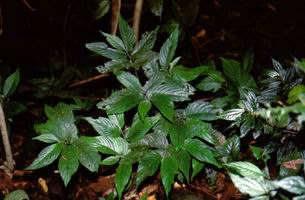 |
Loxonia hirsuta Jack
Penins. Malaysia, Pulau Tioman, phot. A. Weber (1987) |
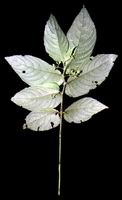 |
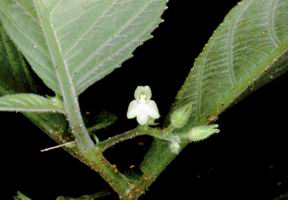 |
Loxonia hirsuta
Jack
Penins. Malaysia, Pulau Tioman, phot. A. Weber (1987). |
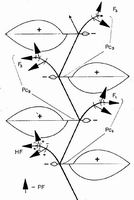
|
Loxonia hirsuta
Jack
Sympodial shoot architecture; Weber, Flora 166: 153-175, Fig. 4 (1977). |
last modified: 2007-07-13